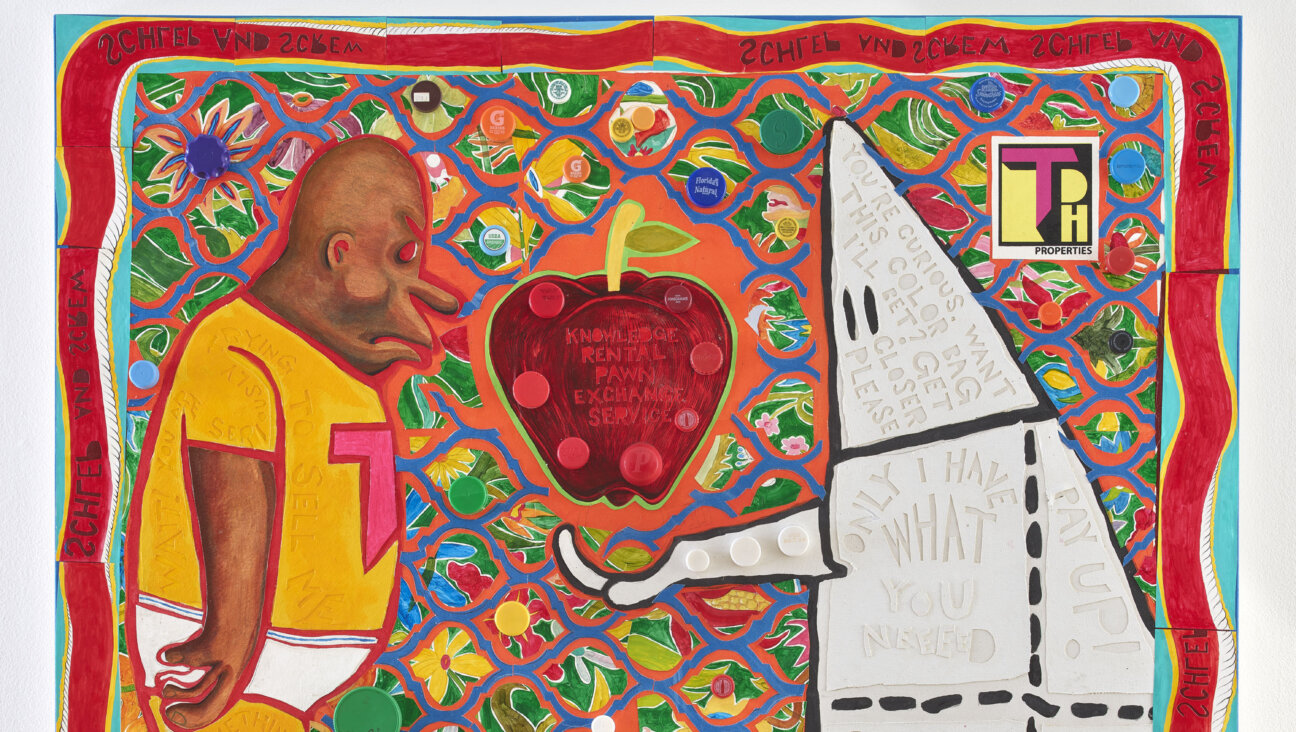A Baker’s Dozen: Thirteen Ways of Looking at a Doughnut
Hanukkah is over, but not your queries about it. Benzion Ginn writes:
“In living through my 84th Hanukkah, I remain stymied by my inability to find an answer to my question concerning the source, origin, derivation, and significance of the word *sufganiyot. *Your skill at rooting out such information would be warmly appreciated.”
To tell you the truth, Mr. Ginn, I’ve rooted out more information than I know what to do with.
The Hebrew word *sufganiyot *(soof-gah-nee-YOT) is the plural of *sufganiya *and denotes the jelly doughnuts that are eaten in Israel on Hanukkah and that — although they can be bought in bakeries and supermarkets and rewarmed in the oven — are best consumed, after the lighting of candles, filled with jam, sprinkled with confectionary sugar, and piping hot from a large pot or vat. The traditional explanation for their association with the holiday is the oil they’re deep-fried in, since Hanukkah commemorates, according to legend, the miraculous vial of Temple oil that lasted eight days. The same explanation is given for Hanukkah’s linkage to latkes, or potato pancakes, which are pan-fried.
Yet this explanation of sufganiyot *is almost certainly an after-the-fact one. Hot doughnuts, or dough puffs, are associated all over Christian Europe with holidays, carnivals and saint’s days. In Italy, for example, where they are called *zeppoli *or (especially in Sicily and the South) sfingi or sfinci, *they are filled with cream or ricotta cheese and sold by street vendors on St. Joseph’s Day. Indeed, the words *sufganiyot *and *sfingi *sound suspiciously alike. Are they connected?
If they are, it would appear, at first glance, to be with the help of Arabic. Sufganiya *is a 20th-century coinage whose root is Hebrew *sfog, *which means sponge and descends from ancient Greek *spongos — *an appropriate term for a jelly doughnut. A sponge in Italian, however, is not a *sfinge, *it’s a *spugna; and Italian Jews traditionally ate fritelle *on Hanukkah, deep-fried dough fritters shaped like diamonds, filled with raisins and dipped in honey. *In North African Arabic, on the other hand, a sponge is a *sfinj — *and lo and behold, a *sfinj *is also a deep-fried doughnut, of the hole-in-the-middle rather than the filled kind, traditionally made by Jews in Morocco, Algeria and Tunisia, and eaten on Hanukkah, too!
Did *sfingi *originally come to Italy from North Africa and then spread to the rest of Europe? Almost certainly not. Doughnuts are not a particularly Arab or Middle Eastern food, and they have a long European history. But for hundreds of years in the Middle Ages, Sicily was under Arab rule. What seems to have happened was that Sicilians called the Italian *zeppolo *by the Arabic word *sfinj, *which was then borrowed by Italian. Meanwhile, the *sfinj *itself crossed the Mediterranean from Sicily in the other direction, to North Africa, where Jews adopted it for Hanukkah.
Can we then conclude that North African Jews coming to Israel brought the sfinj *with them and that it quickly caught on among Israelis of all ethnic backgrounds, was given a filling like an Italian *sfinge’s (jam rather than cheese or cream, perhaps, so that it could be eaten after or with meat dishes) and was called a sufganiya? Not so fast! In her cookbook “The Book of Jewish Food: An Odyssey From Samarkand to New York”(Knopf, 1996), before observing that the sufganiya *was originally an “Austro-Hungarian peasant carnival doughnut, which became a ‘royal’ delicacy at the French court of Marie Antoinette,” Jewish culinary expert Claudia Roden writes that *sufganiyot *are “also called ponchkes.” *Ponchkes? I’d never heard of them. Yet the word had a decidedly Yiddish ring, and I looked it up in Alexander Harkavy’s 1928 Yiddish-Hebrew-English Dictionary*. Sure enough, Harkavy defines a ponchke as a “pastry puff” and calls it, in Hebrew, a *sufgan!
Sufgan *was something else I’d never heard of, so I looked that up, too. To my surprise, it turned out to be an ancient term going back to the Mishnah, in which it refers to a baked dough ball or pastry. Moreover, in the 12th- and 13th-century talmudic commentary known as the Tosafot, composed in northern France and the Rhineland, a *sufgan *is dough that is “fried in oil and called [in French] *bonyes.” And as if that weren’t enough, a doughnut in modern French is a beignet, *from medieval French *buignez!
Where does all this leave us? I wish I knew. Does Yiddish ponchkes come from buignez/bonyes? Linguistically, this seems likely. Was the sufgan, *then, eaten by medieval Jews in France and Germany, from which it traveled to Eastern Europe, and did it reach Israel from there rather than from North Africa and have an –iya ending tacked on to it? But why, in that case, have I never encountered *ponchkes *in my life, and why are they not eaten on Hanukkah by Ashkenazim outside of Israel — for example, by American Jews? And how explain the linguistic similarity between *sufgan *and *sfinj? Could *sufgan *have been borrowed by Arabic from Hebrew in antiquity? Or did Italian *sfinge *derive, via Italian Jews, directly from Hebrew *sufgan *and then pass into Arabic as *sfinj *rather than vice versa?
If you’re now confused, so am I. It would be nice to sort all this out for Mr. Ginn’s 85th Hanukkah. Let’s begin with *ponchkes. *If any of you has ever seen, eaten or heard of one, please let me know.
Questions for Philologos can be sent to [email protected].
A message from our CEO & publisher Rachel Fishman Feddersen

I hope you appreciated this article. Before you go, I’d like to ask you to please support the Forward’s award-winning, nonprofit journalism during this critical time.
We’ve set a goal to raise $260,000 by December 31. That’s an ambitious goal, but one that will give us the resources we need to invest in the high quality news, opinion, analysis and cultural coverage that isn’t available anywhere else.
If you feel inspired to make an impact, now is the time to give something back. Join us as a member at your most generous level.
— Rachel Fishman Feddersen, Publisher and CEO























